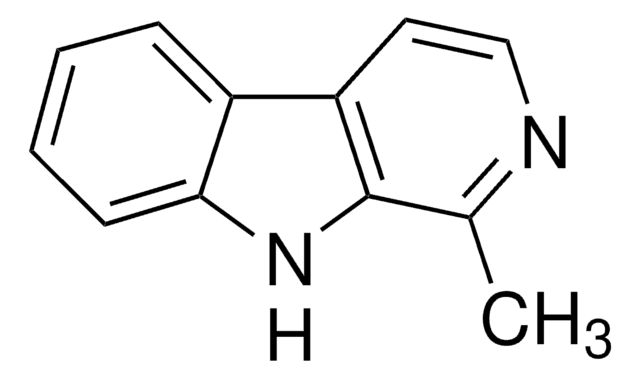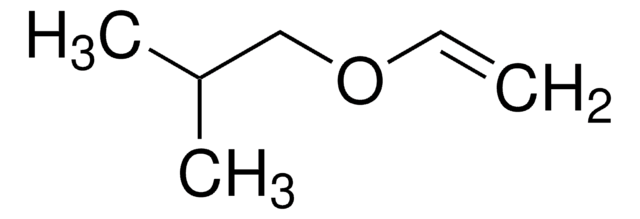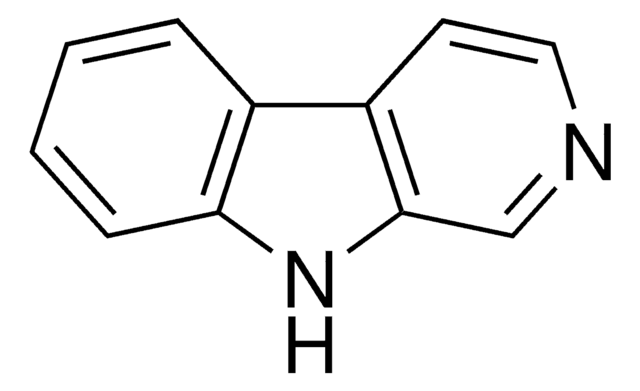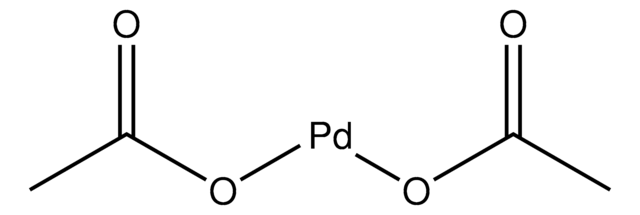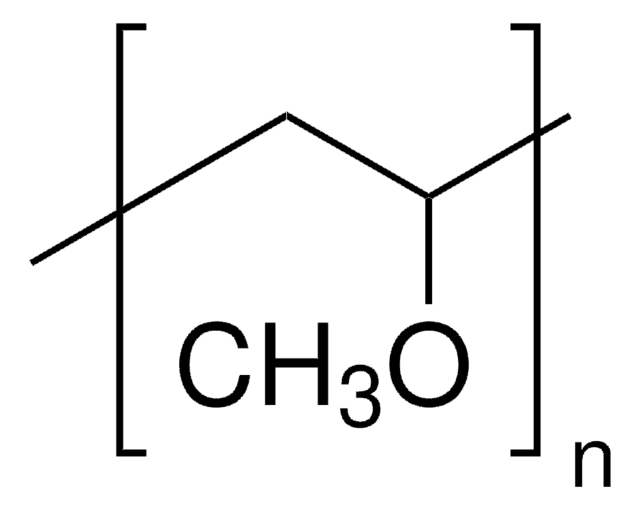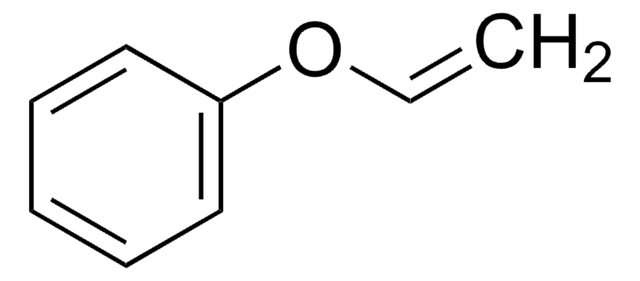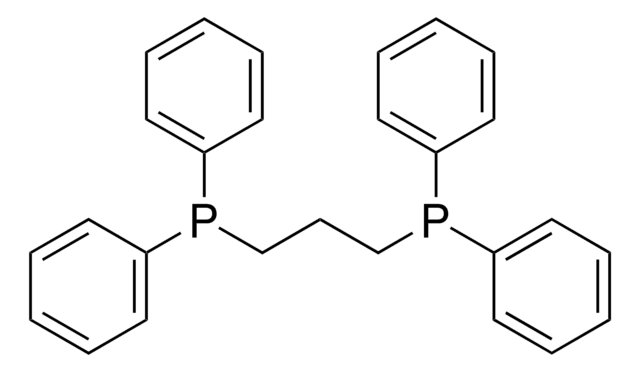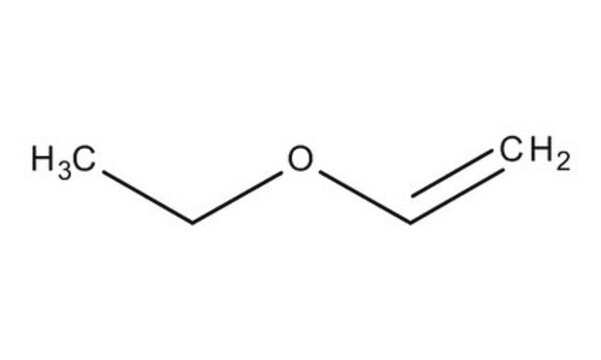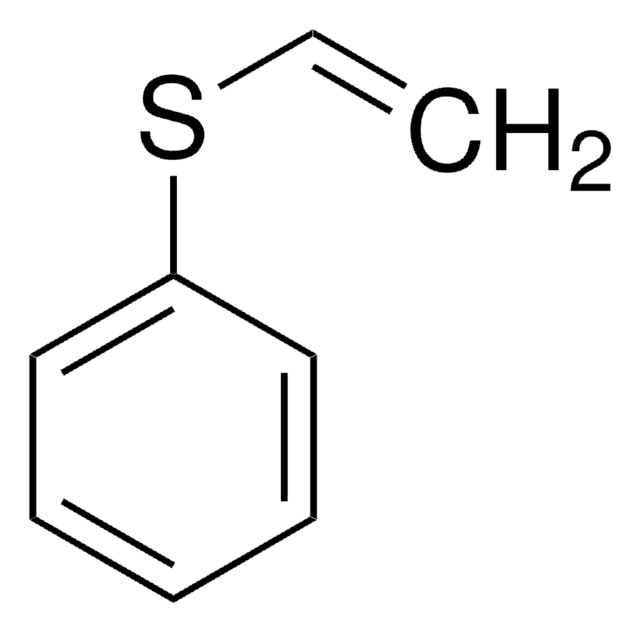Kluczowe dokumenty
110299
Butyl vinyl ether
contains 0.01% potassium hydroxide as stabilizer, 98%
Synonim(y):
(Butyloxy)ethylene, Vinyl butyl ether
About This Item
Polecane produkty
gęstość pary
3.5 (vs air)
Poziom jakości
ciśnienie pary
42 mmHg ( 20 °C)
Próba
98%
temp. samozapłonu
437 °F
zawiera
0.01% potassium hydroxide as stabilizer
współczynnik refrakcji
n20/D 1.400 (lit.)
bp
94 °C (lit.)
mp
−92 °C (lit.)
gęstość
0.774 g/mL at 25 °C (lit.)
temp. przechowywania
2-8°C
ciąg SMILES
CCCCOC=C
InChI
1S/C6H12O/c1-3-5-6-7-4-2/h4H,2-3,5-6H2,1H3
Klucz InChI
UZKWTJUDCOPSNM-UHFFFAOYSA-N
Szukasz podobnych produktów? Odwiedź Przewodnik dotyczący porównywania produktów
Opis ogólny
Zastosowanie
- In the synthesis of statistical copolymers through metallocene-mediated cationic polymerization. These statistical copolymers find applications in various fields which include adhesives, surface coatings, lubricants, greases, elastomers, melting compounds, fibers, and films.
- In the synthesis of poly(vinyl ether) plastics for specific applications in the optical industry. poly(vinyl ether) plastics can be utilized in the production of high-quality optical lenses for various applications, such as eyeglasses, camera lenses, and telescopes.
- In the synthesis of poly (butyl vinyl ether) adhesives for direct ink writing (DIW) 3D printing. The BVE-based adhesives exhibit viscoelastic properties, rheological properties, and printability which are advantageous for the additive build-up of extruded layers in DIW.
Hasło ostrzegawcze
Danger
Zwroty wskazujące rodzaj zagrożenia
Zwroty wskazujące środki ostrożności
Klasyfikacja zagrożeń
Flam. Liq. 2 - Skin Irrit. 2 - Skin Sens. 1
Zagrożenia dodatkowe
Kod klasy składowania
3 - Flammable liquids
Klasa zagrożenia wodnego (WGK)
WGK 1
Temperatura zapłonu (°F)
10.4 °F - closed cup
Temperatura zapłonu (°C)
-12 °C - closed cup
Środki ochrony indywidualnej
Eyeshields, Faceshields, Gloves, type ABEK (EN14387) respirator filter
Wybierz jedną z najnowszych wersji:
Masz już ten produkt?
Dokumenty związane z niedawno zakupionymi produktami zostały zamieszczone w Bibliotece dokumentów.
Klienci oglądali również te produkty
Nasz zespół naukowców ma doświadczenie we wszystkich obszarach badań, w tym w naukach przyrodniczych, materiałoznawstwie, syntezie chemicznej, chromatografii, analityce i wielu innych dziedzinach.
Skontaktuj się z zespołem ds. pomocy technicznej